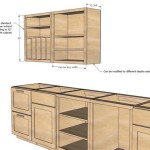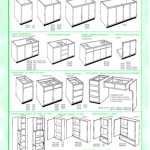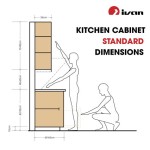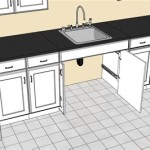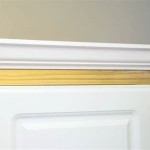Cabinet Cutting List: A Comprehensive Guide
A cabinet cutting list is a crucial document in the cabinetmaking process. It provides detailed instructions for cutting the various components of a cabinet, ensuring accuracy, minimizing waste, and streamlining the assembly process. A well-structured cutting list saves time, reduces material costs, and improves the overall quality of the finished product.
Essential Elements of a Cabinet Cutting List
Several key elements make up a comprehensive and effective cabinet cutting list. These elements ensure clarity and minimize potential errors during fabrication.
Part Name: Clear and descriptive part names are essential for easy identification. Names should reflect the part's function within the cabinet, such as "top," "bottom," "side," "shelf," or "drawer front." Specific descriptors, like "left side" or "right side," are crucial for asymmetrical cabinets.
Dimensions: Precise dimensions are the core of the cutting list. Each part's length, width, and thickness should be clearly stated, typically in millimeters or inches depending on the preferred unit of measurement. Accuracy in these dimensions is paramount to ensure proper fit and function of the assembled cabinet.
Material: Specifying the material for each part is critical. Different parts of a cabinet might require different materials based on their function and aesthetic requirements. The material type, including specific wood species (e.g., oak, maple, plywood), board thickness, and any special finishes (e.g., veneer, laminate), should be clearly indicated.
Quantity: The cutting list should clearly state the number of each part required. This information is crucial for both the cutting and purchasing processes, ensuring adequate material availability and preventing shortages.
Edge Banding: If edge banding is required, the cutting list should specify which edges of each part need it. This typically involves indicating the edge with a designated code or simply stating "front edge," "back edge," etc. The type of edge banding material should also be specified.
Grain Direction: For solid wood parts, indicating the grain direction is crucial for aesthetic and structural reasons. The grain direction influences the appearance of the wood and can affect the part's strength and stability. This is often indicated with an arrow on the diagram accompanying the cutting list.
Additional Information: Depending on the complexity of the project, other information might be included in the cutting list. This could include drilling locations for hardware, specific joinery details like dadoes or rabbets, or any other special instructions related to the part's fabrication.
Generating a Cabinet Cutting List
Cabinet cutting lists can be generated manually or using specialized software. Manual creation involves careful measurement and calculation, often accompanied by sketches or diagrams. Software solutions offer more automated options, generating cutting lists based on cabinet design parameters and optimizing material usage.
Benefits of Using a Cutting List
Utilizing a cutting list offers several advantages in cabinetmaking.
Reduced Material Waste: A detailed cutting list allows for efficient material usage, minimizing offcuts and scrap. This contributes to cost savings and reduces environmental impact.
Improved Accuracy: Precise dimensions and clear instructions minimize errors during cutting, leading to a better fit and finish of the assembled cabinet.
Increased Efficiency: The organized structure of a cutting list streamlines the workflow, reducing the time spent on measuring, calculating, and searching for information.
Enhanced Communication: A cutting list serves as a clear communication tool between the designer, the cabinetmaker, and the material supplier, ensuring everyone is working with the same specifications.
Software for Creating Cabinet Cutting Lists
Various software packages are available for creating cabinet cutting lists, ranging from free online tools to professional design software. These programs often integrate with CNC machines, further automating the fabrication process.
Optimizing a Cutting List for Efficiency
Several strategies can be employed to optimize a cutting list for maximum efficiency. These strategies often involve arranging parts on the sheet material to minimize waste and simplify the cutting process.
Nesting: Nesting involves strategically arranging parts on the sheet material to minimize the space between them. This reduces the overall amount of material required and minimizes scrap.
Grain Matching: For aesthetic purposes, grain matching involves aligning the wood grain of adjacent parts. This creates a visually appealing, continuous flow across the finished cabinet.
Integration with Other Shop Documents
The cabinet cutting list is a key element within a larger set of shop documents, including assembly diagrams, hardware lists, and finishing schedules. These documents work together to provide a complete guide for the entire cabinetmaking process.

Cutting List For Kitchen Cabinets Materials Sketchlist3d

Cutting List For Kitchen Cabinets Materials Sketchlist3d

Cabinet Pro Drawings And Cut List Reports

Cutlist Plus Cutting Diagram Sheet Layout Optimizer For Plywood Panels And Lumber

Cabinet Cut List 1

Cutting List Optimizer For Professional Works Wood Designer

Cutting List Optimizer For Professional Works Wood Designer

Cabinet Cut List Spreadsheet Excelguider Com

Cutting List Kd Max 3d Kitchen Design South

Cut List
Related Posts

